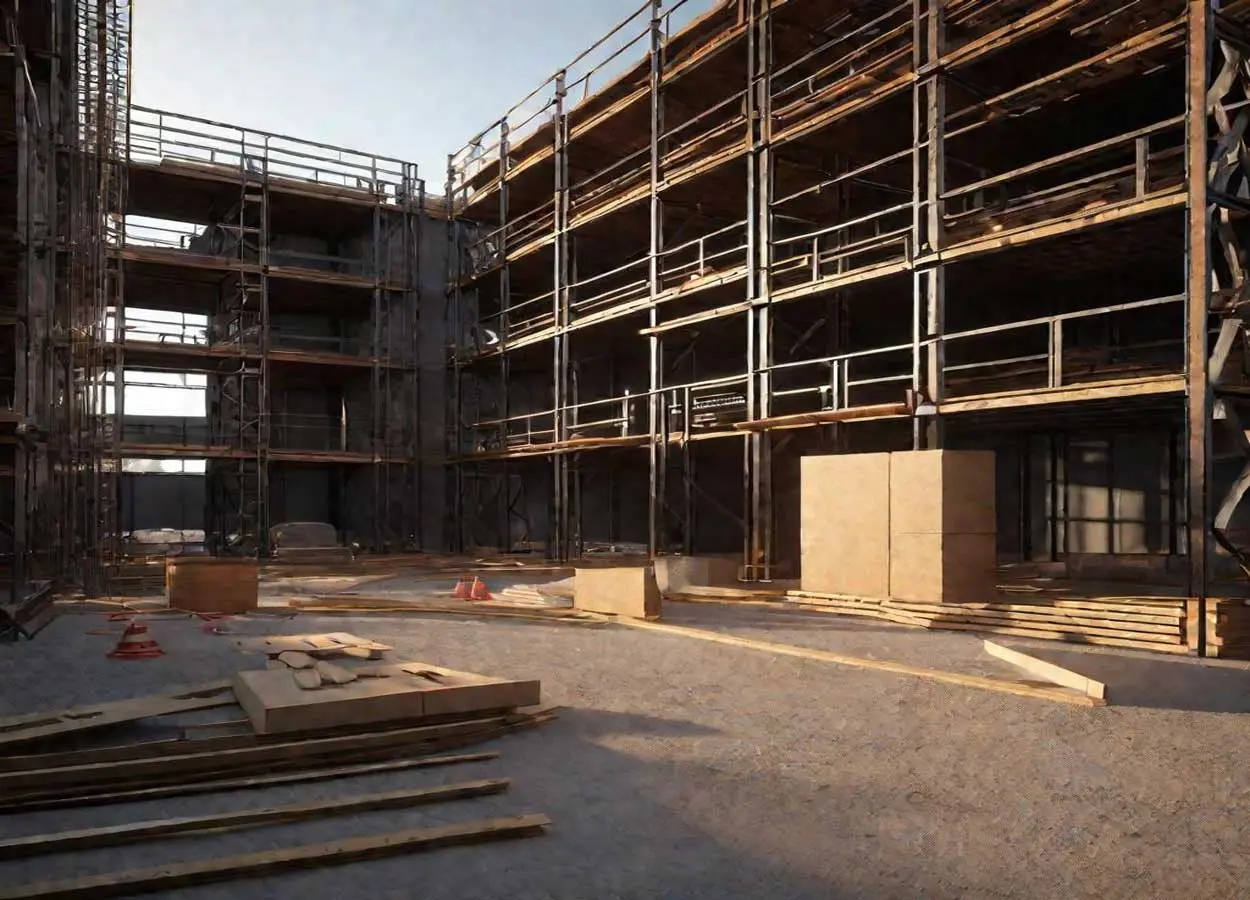Last Updated on May 7, 2024 by Admin
future of the construction industry stands at the cusp of a transformative era, shaped by rapid technological advancements and evolving global demands. As we delve into the future of the construction industry, it is imperative to assess the challenges and opportunities that lie ahead. With a background enriched by years of experience and a keen insight into industry trends, I aim to shed light on how innovation, sustainability, and digitalization are poised to redefine this sector. The thesis of this article is that the integration of cutting-edge technologies and sustainable practices is not only inevitable but essential for the future prosperity of the construction industry. This exploration will provide readers with a comprehensive understanding of the potential changes in project management, materials science, and workforce dynamics. By examining these facets of the future of the construction industry, we from Taleb Kasimy Trading Co., aim to paint a picture of a future where the construction industry is more efficient, environmentally friendly, and adaptable to the needs of tomorrow’s world.
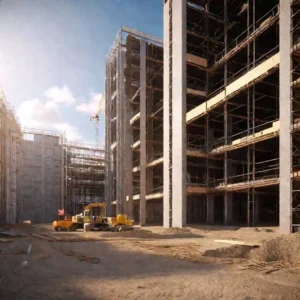
Technological Innovations Reshaping Construction
The construction industry, historically known for its resistance to change, is currently undergoing a transformative phase, thanks to the advent of groundbreaking technological innovations. These technologies are not only enhancing operational efficiency but are also contributing to safer and more environmentally friendly construction practices. Among the most influential of these technologies are automation and robotics, 3D printing, and artificial intelligence (AI), each playing a pivotal role in reshaping the future of the construction industry. Also, Automation and robotics have been at the forefront of technological advancements in construction, driving efficiency and precision to previously unattainable levels. Robotic systems, such as drones for surveying land and robotic arms for laying bricks, are streamlining tasks that were traditionally labor-intensive and time-consuming. The use of these technologies not only speeds up the construction process but also improves safety on-site by reducing human exposure to hazardous working conditions.
Another future of the construction industry technological innovation making waves in the construction industry is 3D printing. This method allows for the creation of complex building components or even entire structures layer by layer, offering unprecedented design flexibility and material efficiency. The benefits of 3D printing in construction are manifold, ranging from reduced material waste and shorter construction times to lower labor costs and decreased carbon footprint. For instance, a recent project demonstrated the capability to print a 400-square-foot house in just 24 hours, a feat that underscores the transformative potential of 3D printing in making construction faster, greener, and more cost-effective.
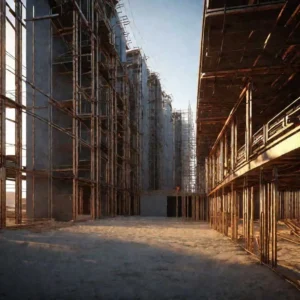
A Core Focus for the future of the construction industry
The construction industry stands at the precipice of a transformative era, with sustainability emerging as a pivotal focus. This shift towards eco-friendly practices is not just a response to growing environmental concerns but also a strategic adaptation to changing market demands and regulatory landscapes. As we delve deeper into this new era, three key areas stand out for their potential to significantly influence the future of the construction industry: the revolution in green building materials, the integration of energy efficiency and renewable energy, and the implementation of water conservation techniques.
-
Green Building Materials for the future of the construction industry
The innovation in green building materials is reshaping the construction industry’s approach to sustainability. These materials, ranging from recycled steel to low-emission paints, not only minimize the environmental impact but also enhance building efficiency and occupant health. For instance, the use of bamboo as a durable, renewable alternative to traditional hardwoods reduces deforestation and carbon footprint. Similarly, the development of self-healing concrete, which uses bacteria to repair cracks, extends the lifespan of structures while reducing maintenance costs and materials waste. By prioritizing the future of the construction industry materials, builders can significantly reduce the ecological footprint of their projects while meeting the growing consumer demand for sustainable living spaces.
-
Energy Efficiency and Renewable Energy Integration
Integrating energy efficiency measures and renewable energy sources is becoming increasingly critical in contemporary construction projects. This future of the construction industry not only reduces the operational carbon footprint of buildings but also aligns with global efforts to combat climate change. Innovative technologies such as photovoltaic glass, which transforms windows into solar panels, and smart HVAC systems that optimize energy use based on real-time data, are at the forefront of this transition. Moreover, the adoption of building design principles that maximize natural light and ventilation further reduces the need for artificial heating and cooling, thereby lowering energy consumption. Encouragingly, these strategies not only contribute to environmental sustainability but also offer significant cost savings over the building’s lifecycle.
-
Water Conservation Techniques in the future of the construction industry
Water conservation has become a critical component of sustainable construction practices, with techniques focusing on both the reduction of water use during the construction process and the long-term conservation measures of the completed structure. Rainwater harvesting systems, for instance, can be integrated into building designs to collect and reuse rainwater for landscaping and flushing toilets, significantly reducing the demand for municipal water supplies. Additionally, in the future of the construction industry, the use of drought-resistant landscaping and low-flow plumbing fixtures further enhances water efficiency. These measures are particularly important in regions facing water scarcity, contributing not only to the sustainability of construction projects but also to the broader goal of responsible water resource management.
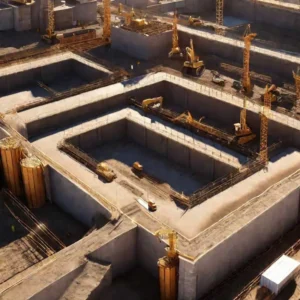
Addressing the Skills Gap in the future of the construction industry
As the construction industry continues to evolve, integrating new technologies and methodologies, a significant skills gap has emerged. This gap represents the difference between the skills that the current workforce possesses and those required to harness the full potential of modern construction practices. Addressing this gap is not only crucial for the growth and competitiveness of the industry but also for ensuring the successful completion of projects in a safe, efficient, and innovative manner.
-
The Need for Continuous Learning and Training
Continuous learning and training for the future of the construction industry have become indispensable in bridging the skills gap within the construction industry. Organizations must invest in comprehensive training programs that are tailored to the evolving demands of the sector. This includes not only technical skills related to new construction technologies, such as Building Information Modeling (BIM), drones, and automation, but also soft skills that enhance teamwork, communication, and problem-solving abilities. By fostering a culture of continuous learning, companies can enhance their workforce’s adaptability and readiness to tackle new challenges, thereby increasing their competitive edge.
-
Attracting Young Talent to the future of the construction industry
The integration of technology into the construction industry not only addresses the immediate needs of projects but also serves as a key strategy for attracting younger generations. Millennials and Gen Z workers, who are digital natives, seek careers that offer innovation, creativity, and the use of cutting-edge technologies. By showcasing how construction is moving towards a technologically advanced future of the construction industry, the industry can appeal to this demographic, highlighting opportunities for growth, development, and engagement with technologies such as virtual reality (VR), augmented reality (AR), and 3D printing.
-
The Importance of Leadership in a Technologically Advanced Environment
In the context of a technologically advanced construction industry, leadership plays a pivotal role in driving innovation and addressing the skills gap. Leaders must not only demonstrate a commitment to leveraging new technologies but also possess the foresight to anticipate the future of the construction industry trends and prepare their teams accordingly. This involves not just investment in technology, but also in the people who will use these tools to bring projects to fruition.
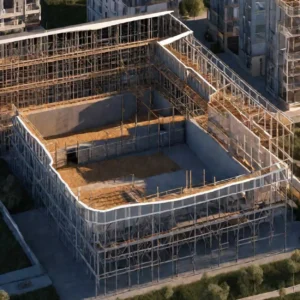
Regulatory Challenges and Opportunities
The construction industry stands on the precipice of transformation, motivated by innovation and pressured by regulatory frameworks. As we delve into the complexities and prospects of this evolving landscape, we recognize that the future of the construction industry is not just about building structures but also about navigating the intricate web of building codes and standards, leveraging government support for sustainable practices, and aligning with global climate change policies. These elements together shape a pathway toward a more resilient, efficient, and sustainable construction industry.
The dynamic nature of building codes and standards often presents a significant hurdle for innovation within the future of the construction industry However, these guidelines are pivotal in ensuring safety, sustainability, and efficiency in building practices. The key to overcoming these challenges lies in the industry’s ability to adapt and innovate within the confines of these regulations. By fostering a culture of collaboration between regulators, builders, and innovators, the industry can identify opportunities to influence the development of more flexible and forward-thinking standards. Moreover, leveraging emerging technologies such as Building Information Modeling (BIM) can streamline compliance processes and enhance the adaptability of construction practices to meet evolving codes and standards.
Construction
In conclusion from Taleb Kasimy Trading Co., the future of the construction industry is poised for a remarkable transformation, driven by several key factors outlined in this article. The integration of technological innovations such as automation, robotics, 3D printing, and artificial intelligence is revolutionizing traditional construction processes, making them more efficient and paving the way for a more innovative future. At the same time, the industry’s shift towards sustainability is not just a response to growing environmental concerns but a proactive approach to reducing the ecological footprint of construction projects and meeting consumer demand for sustainable living spaces. also, you can read Top Building Material Innovations article for more good information. Furthermore, for the future of the construction industry, the digital transformation of construction sites through the adoption of Building Information Modeling (BIM), drones, the Internet of Things (IoT), and Virtual Reality (VR)/Augmented Reality (AR) technologies signifies a shift toward safer, more efficient, and responsive construction practices.

